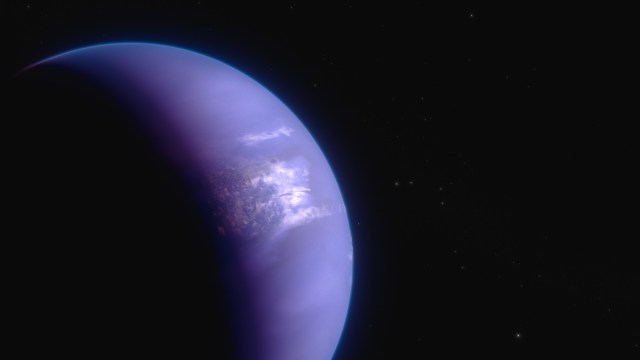 Reference: Found here
Reference: Found hereIn The News:
NASA's Webb Maps Weather on Planet 280 Light-Years Away - NASA Science
An international team of researchers has successfully used NASA's James Webb Space Telescope to map the weather on the hot gas-giant exoplanet WASP-43 b.
Precise brightness measurements over a broad spectrum of mid-infrared light, combined with 3D climate models and previous observations from other telescopes, suggest the presence of thick, high clouds covering the nightside, clear skies on the dayside, and equatorial winds upwards of 5,000 miles per hour mixing atmospheric gases around the planet.
The investigation is just the latest demonstration of the exoplanet science now possible with Webb's extraordinary ability to measure temperature variations and detect atmospheric gases trillions of miles away.
Planet Where It's Sunny Every Day Spotted 280 Light-Years Away

Astronomers have mapped the weather on a planet hundreds of light years away, and found that it always has clear skies on the side facing its sun.
This far-off mapping of the planet's weather was made possible thanks to the power of the James Webb Space Telescope (JWST), which is able to measure variations in temperatures and the gases in the atmosphere of exoplanets many billions of miles away from Earth.
WASP-43 b is a "hot Jupiter" type planet with an atmosphere mostly made from hydrogen, water, and helium. It orbits its star (named WASP-43) at a very close 1.3 million miles, only 4 percent of the distance between our sun and its closest planet, Mercury.

The James Webb Space Telescope has helped an international team of astronomers create a weather report for a distant exoplanet. The forecast calls for thick clouds with patches of uninterrupted sky and 5,000-mile-per-hour winds. Certainly, this giant exoplanet is not a pleasant vacation spot, but we only know that thanks to Webb's incredible capacity for exoplanet science, it has NASA and astronomers worldwide excited.
The exoplanet in question, WASP-43 b (also known as Astrol⁘bos), was discovered in 2011 by the Wide Angle Search for Planets. It's nearby in celestial terms, at 280 light-years away in the constellation Sextans. It's known as a hot Jupiter, a large gas giant that orbits close to its sun. In the case of WASP-43 b, it completes an orbit in about 0.8 Earth days. Since it orbits so close to the star (just 4% of Mercury's orbit), WASP-43 b is tidally locked, with one side always facing the scorching heat of WASP-43.
The exoplanet has been observed with instruments like Hubble and Spitzer, but Webb can see more detail than either of those space observatories. "With Hubble, we could clearly see that there is water vapor on the dayside. Both Hubble and Spitzer suggested there might be clouds on the nightside," said lead author of the new study, Taylor Bell. "But we needed more precise measurements from Webb to really begin mapping the temperature, cloud cover, winds, and more detailed atmospheric composition all the way around the planet."
Still, even Webb is usually unable to image exoplanets directly , as they are too small and dim compared to the stars they orbit. However, WASP-43 b's size and nearness to its star make it an excellent candidate for phase curve spectroscopy. This approach measures small changes in brightness as the planet orbits. Webb observes the universe in infrared, and the amount of mid-infrared light emitted by an object is dependent on its temperature. When using that data, the team was able to infer the planet's temperature and weather patterns.
No comments:
Post a Comment